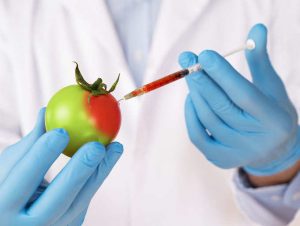Advantages of Genetically Modified foods

The world’s population has risen to 7.3 billion and is expected to double over the next 50 years. Ensuring adequate food supplies for this booming population will be a major challenge in the years to come.
GM foods promise to meet this need in a number of ways:
1. Pest resistance: crop losses from insect pests can be devastating, resulting in devastating financial losses for farmers and starvation in developing countries. Farmers typically use a lot of tonnes of chemical pesticides every year. Consumers do not wish to eat food that has been treated with pesticides due to potential health hazards and the run-off of agricultural waste due to excessive use of pesticides and fertilisers may poison the water supply and harm the environment. Growing GM foods such as Bt corn can help eliminate the use of chemical pesticides and reduce the cost of bringing the crop onto the market.
2. Herbicide tolerance: For some crops, it is not cost-effective to remove weeds by physical means such as tilling, so that farmers often spray large quantities of different herbicides (weed-killers) to destroy weeds, a time-consuming and expensive process that requires care so that the herbicide does not harm the plant or the environment. Genetically engineered crop plants that are resistant to one very powerful herbicide could help prevent environmental damage by reducing the amount of herbicide needed. For example, Monsanto has produced a genetically modified strain of soybeans that is not affected by its herbicide product Roundup Ready Soybeans. A farmer grows these soya beans, which then require only one application of weed-killer instead of multiple applications, reducing the cost of production and limiting the risks of run-off agricultural waste.
3. Disease Resistance: There are many viruses, fungi and bacteria that cause plant disease. Plant biologists are working to develop plants with genetically engineered resistance to these diseases.
4. Cold tolerance: Unexpected frost can destroy sensitive seedlings. An antifreeze gene from cold water fish has been introduced to plants such as tobacco and potatoes. With this antifreeze gene, these plants are able to tolerate cold temperatures that would normally kill unmodified seedlings.
5. Drought tolerance / salinity tolerance: As the world’s population grows and more land is used for housing rather than food production, farmers will need to grow crops in locations previously unsuitable for plant cultivation. Creating plants that can withstand long periods of drought or high salt content in soil and groundwater will help people grow crops in formerly inhospitable locations.
6. Nutrition: malnutrition is common in third world countries where impoverished people rely on a single crop, such as rice, for the main staple of their diet. However, rice does not contain sufficient amounts of all the nutrients needed to prevent malnutrition. If rice could be genetically engineered to contain additional vitamins and minerals, nutrient deficiencies could be mitigated. For example , vitamin blindness. Deficiency is a common problem in countries of the Third World. Researchers at the Swiss Federal Institute of Plant Science Technology have produced an unusually high content of beta-carotene (vitamin A) ‘golden’ rice strain.
7. Pharmaceuticals: Medicines and vaccines are often costly to produce and sometimes require special storage conditions that are not readily available in third world countries. Researchers have developed edible vaccines for tomatoes and potatoes. These vaccines are much easier to ship, store and administer than conventional injection vaccines.
8. Phytoremediation: Not all GM crops are grown as crops. Soil and groundwater pollution remains a problem in all parts of the world. Plants such as poplar trees have been genetically engineered to clean up heavy metal pollution from contaminated soils.
